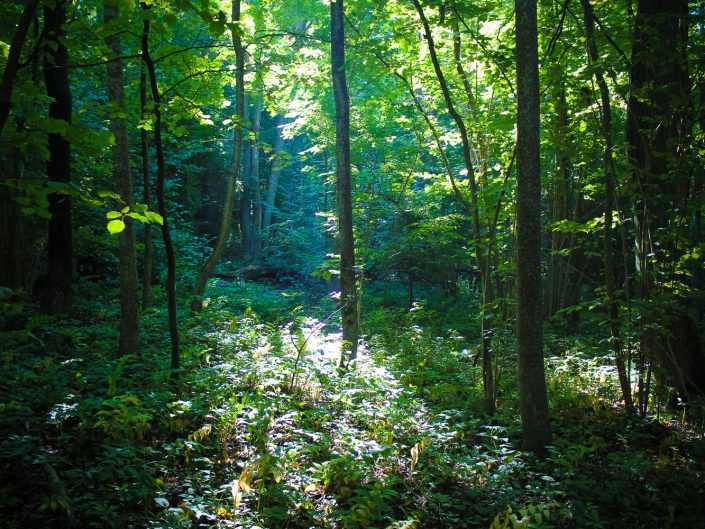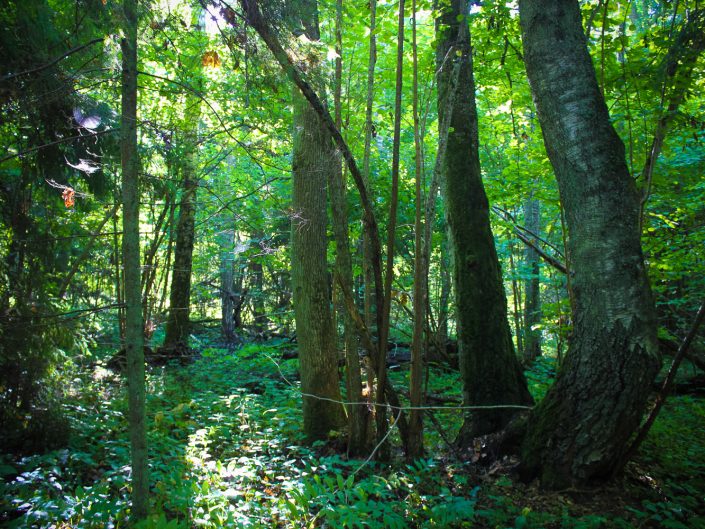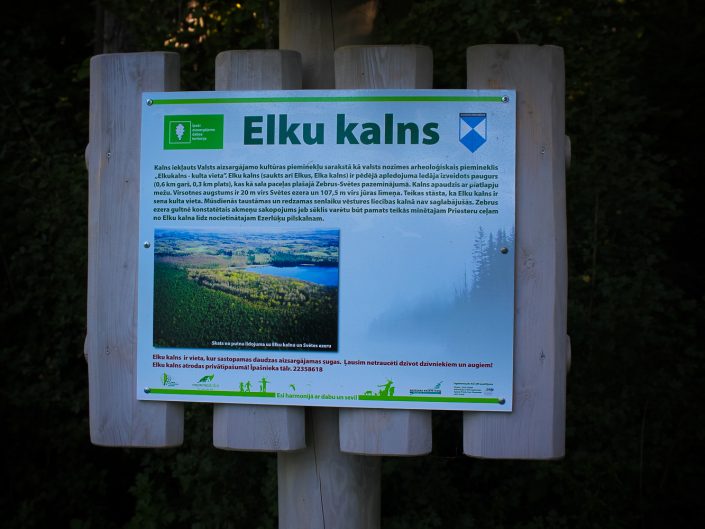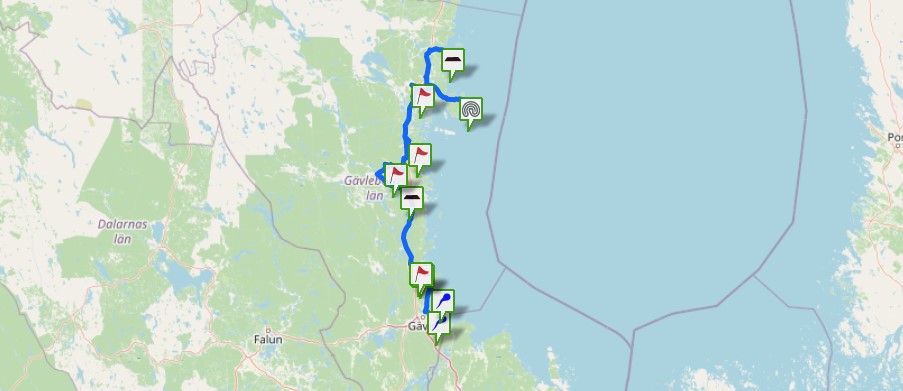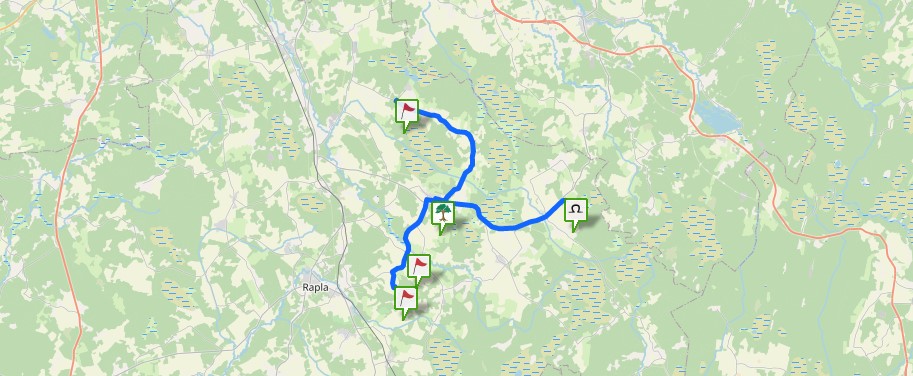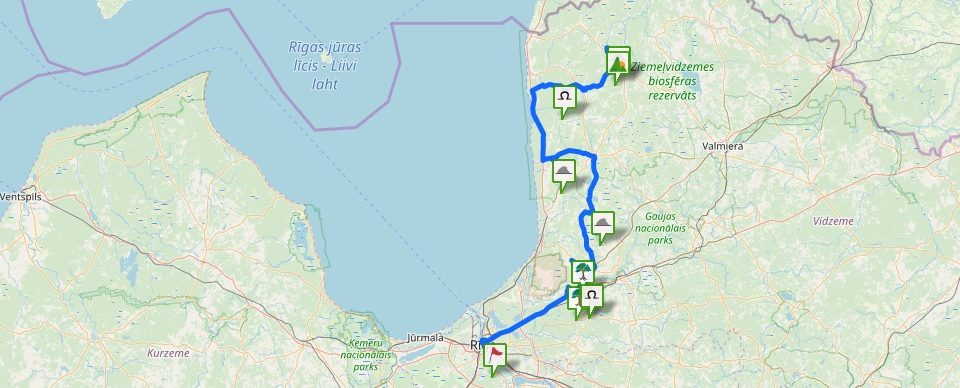600 x 250 m large and up to 20 m high elevation within an area of marshy lakes and bogs, which is accessible by the forest road from the south. The whole hill is overgrown with a mixed tree forest, which is an interesting biological site by itself. On the plateau of the hill there is a meadow enclosed by a deciduous forest, which turns into a coniferous forest on the slopes of the hill.
Already during the 19th century the Elku Hill was described by the well-known Baltic German researcher A.Bielenstein. During that time he had spotted several stone stack walls, which are not seen nowadays. A larger number of stones is found at the foot of the hill slope most close to Lake Svetes. It is said once there was a stone with dimples or carvings, but it is not found nowadays. As much it is known the stones were brought away from the hill for the purposes of construction. According to legends once there was a church on the hill and during the Swedish era there was a social gathering place. The legends tell there is a Priests’ Road nearby connecting Elku Hill through the bed of the Lake Zebrus with one of the castle mounds on the other bank of the lake. Probably, these legends reveal sandbanks within the lake, which seemed to be that large in the imaginations of the people that the lake could be crossed via these. Zebrus Elku Hill still bears trenches from the wars of the 20th century. In 1999, under the leadership of the archaeologist Juris Urtans, minor testing excavations within an area of 34 m2 were carried out. During the excavations it was not proven that the hill was an artificial formation. The phosphate analysis did not demonstrate people had been much present on the hill. Slightly more increased presence of phosphates was only detected on the highest point of the hill. Along with the excavations on the hill, also the Lake Zebrus was researched, where a 400m long and 20m wide sandbank was found, which may be the legendary Priests’ Road. Direction E from the Elku Hill a large bog is found, which is called Elku or Elkus Bog.
Nothing particular in terms of archaeology; rather interesting in terms of botany.

